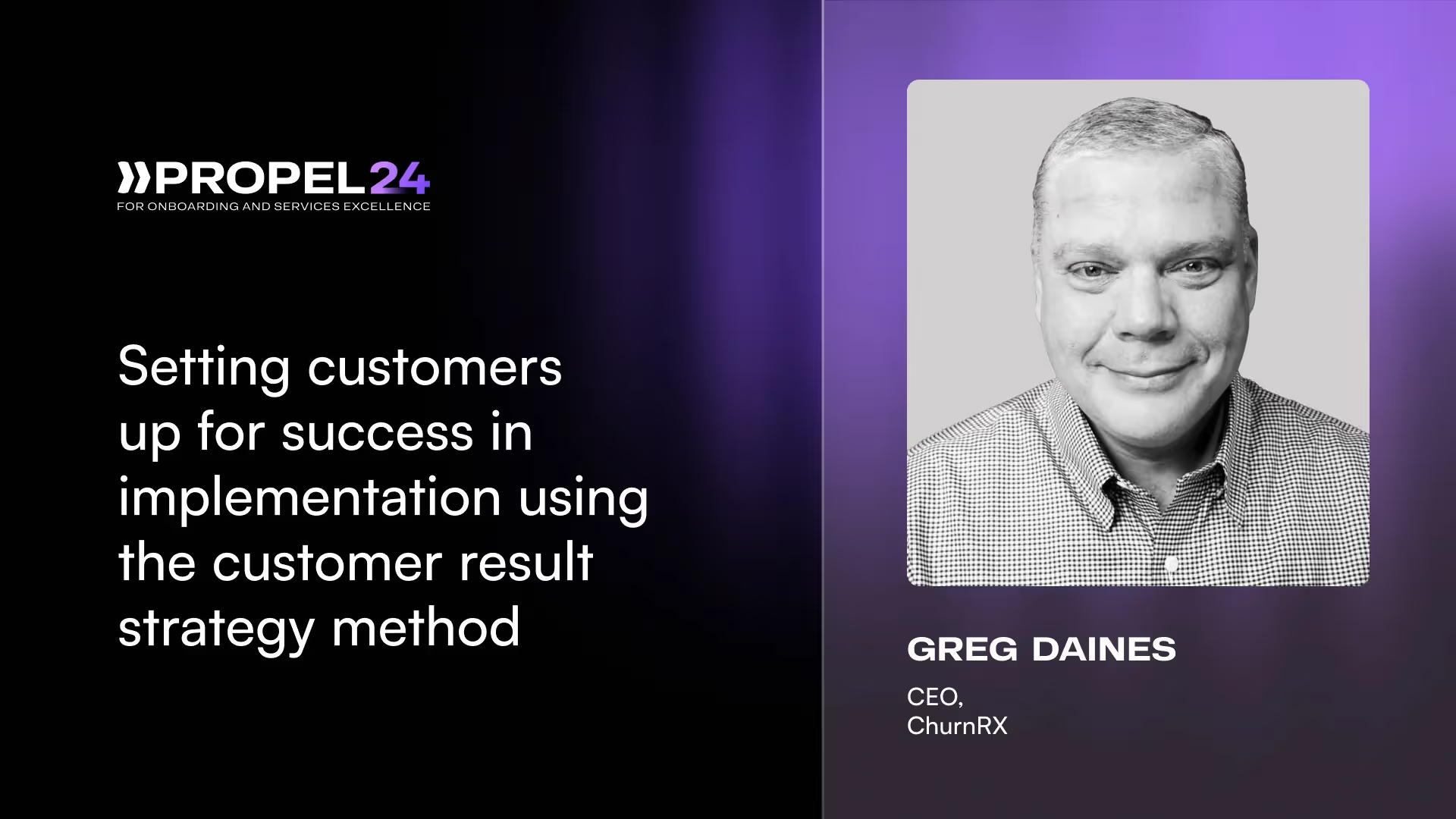Move over customer loyalty, it's time to focus on customer bonding. In this special Propel24 session, we had Greg Daines, the CEO of ChurnRX, offer a fresh perspective on customer retention and what businesses should really focus on.
Widely known as the "churn doctor", Greg leads a company dedicated to helping organizations reduce churn and improve customer engagement. Greg is a frequent keynote speaker and works closely with industry leaders as an executive coach and business transformation consultant. Throughout his professional career, Greg has assisted multiple leading SaaS companies in enhancing retention and growth.
Greg’s Propel24 session focused on:
- Reevaluating the traditional approach to customer loyalty
- Reasons to focus on customer bonding
- The difference between customer bonding and customer loyalty
- Methodology to create customer bonding
- The customer results strategy matrix as an alternative to success plans
Customer loyalty is dead
A recent study reveals a significant decline in customer loyalty worldwide, with a 14% drop from 2022 to 2023.
Modern loyalty is more incentivized – heavily reliant on discounts and rewards – suggesting companies must "buy" loyalty rather than earn it.
This shift is evident as 59% of "loyal" customers would switch brands for a lower price.
The report's findings challenge traditional definitions of loyalty. Understanding these changes is crucial for businesses striving to build and maintain a genuinely loyal customer base.
The surprising truth about customer satisfaction’s impact on retention
ChurnRX’s customer churn analysis reveals an interesting trend in customer retention and churn over the years. Despite significant investments in enhancing customer satisfaction—evident from steadily rising satisfaction rates—customer retention has decreased at twice the rate satisfaction has increased.
This disconnect raises an important question: If customer satisfaction and loyalty are linked, why hasn't improved satisfaction led to better retention?
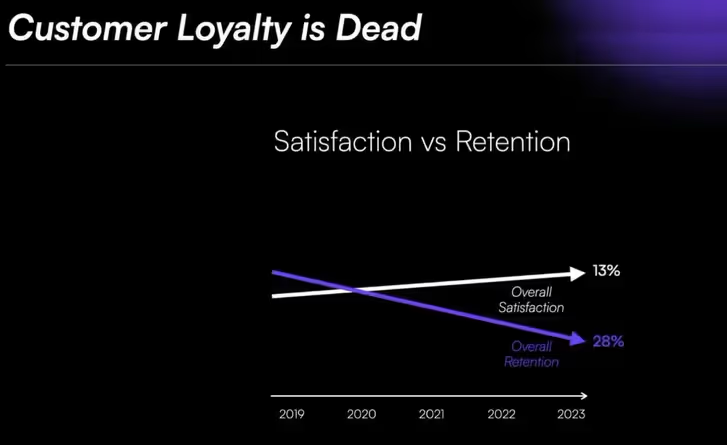
The illusion of customer satisfaction and retention
An interesting finding from the book The Effortless Experience highlights that while managers often believe exceeding customer expectations is crucial for loyalty, customers primarily expect their basic needs to be met.
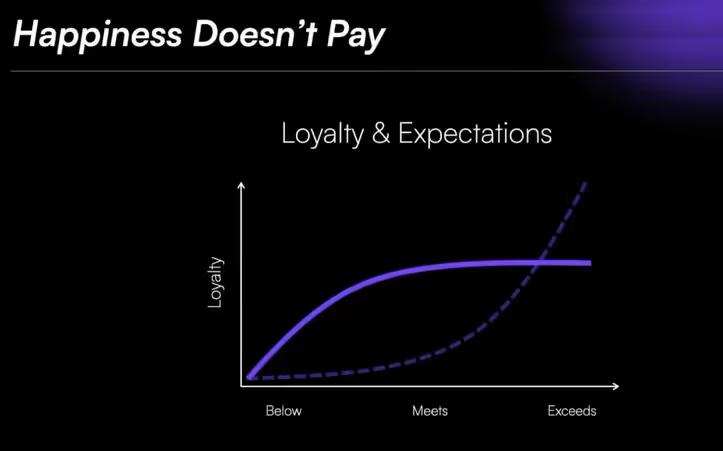
This suggests that meeting expectations may be more critical for fostering loyalty than exceeding them.
ChurnRX’s customer churn analysis from its customer base also reveals that customer satisfaction scores fail to predict customer retention.
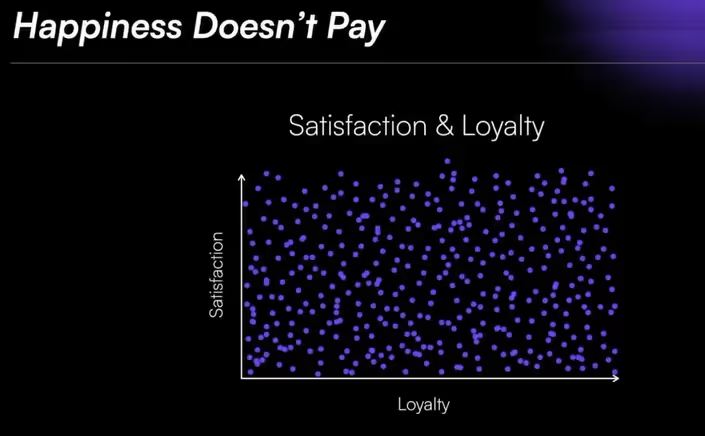
By extension, the common practice of measuring customer satisfaction through metrics like Net Promoter Score (NPS) fails to capture the true determinants of customer retention.
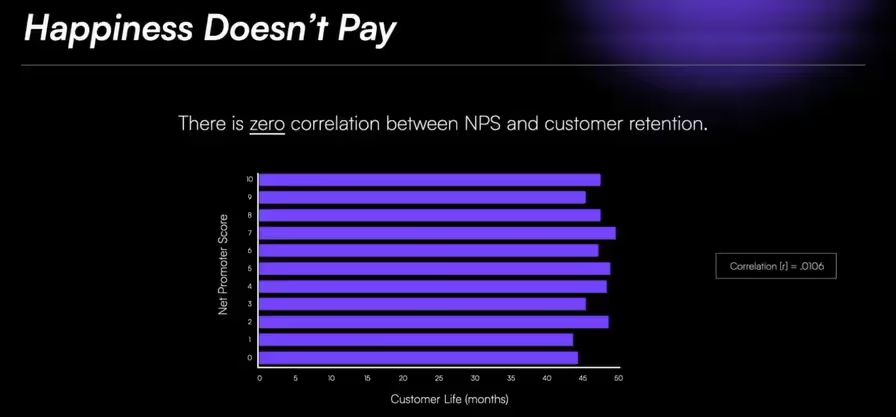
The assumption that satisfied customers are inherently more loyal overlooks the complexity of customer behavior. Extensive studies have shown that factors like customer engagement, rather than mere satisfaction, are more significant in determining retention rates. These findings only highlight the need for a more nuanced approach to customer retention.
The #1 predictor of customer retention
In a sea of factors influencing customer retention, one stands head and shoulders above the rest: customer results.

Customers who achieve measured results demonstrate a staggering six to tenfold increase in retention compared to their counterparts.
This underscores the importance of tangible outcomes in fostering long-term customer allegiance.
In essence, it explains why customers choose to remain committed—even in the absence of overt satisfaction—highlighting the role of results in shaping the landscape of customer retention.
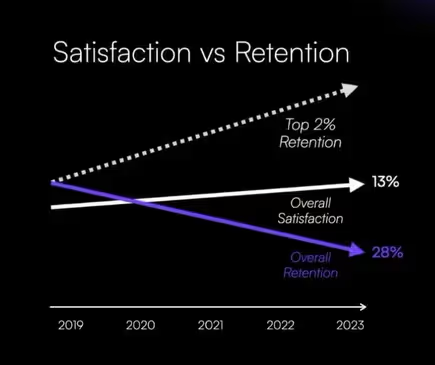
From customer loyalty to customer bonding
Customer bonding, a concept coined by MIT professor Arnoldo Hacks, shifts the focus from traditional loyalty to achieving tangible results for customers. It's about becoming indispensable to their success.
Customer bonding is the result of effectively transferring expertise to customers.
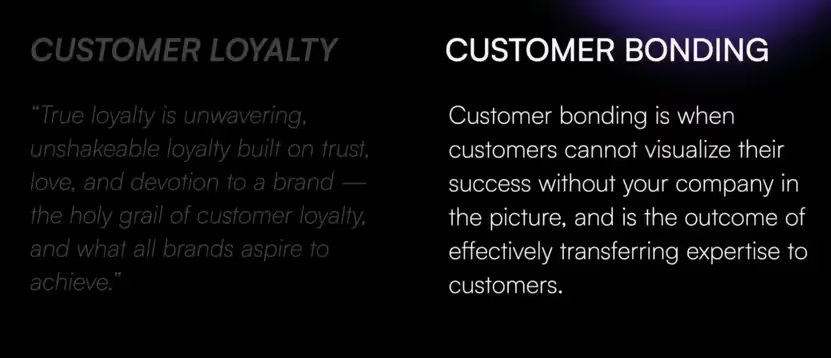
The critical question then is why some customers get results while others don't. The answer lies in building a customer journey focused on achieving consistent results rather than just optimizing the customer experience.
To ensure customer success, we must reverse-engineer our approach, starting from the desired results and working backward to create meaningful experiences every step of the way.
A product doesn’t produce results, behavior change does
Customers will stay and expand if they achieve the desired results. However, the key to driving results lies not solely in the product itself, but in the behavior changes it inspires. Customers who adapt their approach to leverage a solution's benefits are the ones who experience success.
This also explains the variation in outcomes among customers using the same product/service -- the differentiating factor is their behavior.
Focusing on facilitating behavior change is essential for driving customer results. Here are three things to remember when you think about customer retention:
- Customers stay to achieve results.
- Results stem from changes in customer behavior.
- Customer behavior changes when they understand why and how to change.

The customer bonding playbook
The traditional focus on customer satisfaction and retention is being replaced by a new model aimed at driving customer results by:
- Sharing expertise to help customers improve
- Continually expanding efforts to do more for them
- Prioritizing customer outcomes over mere satisfaction
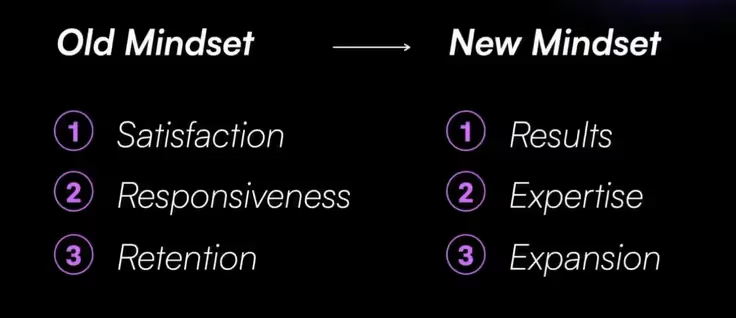
Here are the key steps in this approach:
- Measure and materialize customer results: It's crucial to measure customer results. If results aren't measured, customers may not recognize or appreciate the benefits, even if they achieve them. Interestingly, even customers with poor measured results stay twice as long as those whose results aren't measured at all.
- Drive customer behavior change with expertise: Sharing expertise is essential to guide customers in changing their behavior to enhance their success. This expertise is the key to leveraging and driving customer results.
- Expand customers to their next level: Continuously show customers how to achieve their next set of goals. When customers see you as a long-term partner in their ongoing improvement, they are likely to remain loyal.
An alternative to success plans: The ‘customer results strategy’ approach
While success plans are effective tools to identify customer goals, outline the results customers care about, and detail the steps to achieve those results, they pose challenges for two main reasons:
- Customer effort: Success plans require a considerable amount of work from customers. While highly engaged and dedicated customers may be willing to invest the time and effort, the majority do not. Most customers are not inclined to put in the necessary effort to engage with these plans.
- Customer understanding: Even when customers are willing to put in the effort, many do not know how to fill out success plans effectively. Starting with a blank page can be daunting. Some customers are skilled at identifying their goals and understanding the connection between their efforts and key business outcomes, but many are not.
To address these challenges, there is a need for a simpler, more effective approach.
The customer results strategy focuses on identifying the key results that are compelling enough for customers to stay and then guiding them through the process of achieving those results.
This strategy simplifies the process and provides clear guidance, addressing both the effort and understanding barriers.
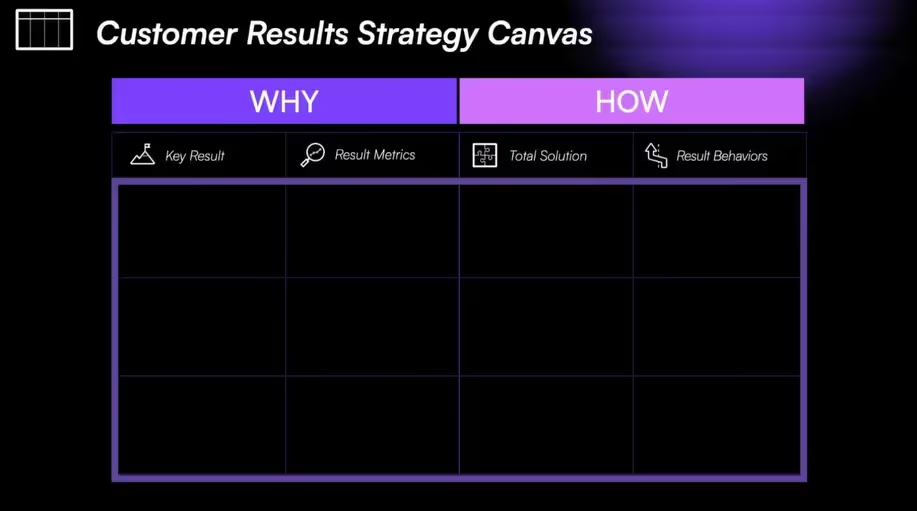
It focuses on ensuring customer success and retention through four essential elements:
1. Key result
- Definition: The primary business outcome that justifies the customer's investment and renewal.
- Implementation: Help customers define outcomes that show significant business benefits, such as increased efficiency or reduced costs.
- Key considerations: Key results should be specific outcomes that have a significant business impact and are highly valuable to the customer. Achieving a key result should lead to measurable improvements or reductions in critical areas.
2. Result metrics
- Definition: Agreed-upon measurements to track progress toward the key result.
- Implementation: Clearly define and agree on how the key result will be measured, including the data sources and measurement methods.
3. Total solution
- Definition: All tools and resources needed to achieve the key result.
- Implementation: Provide all necessary components, ensuring customers have the right toolkit to succeed.
4. Result behaviors
- Definition: Specific actions customers must adopt to achieve the key result.
- Implementation: Guide customers on necessary behavior changes through training and support, integrating new practices into their workflows.
- Key considerations: The behavior changes need to extend beyond mere product adoption, and are crucial for securing commitment from customer leadership.

Access Greg’s customer results strategy template here.
6 tips for using the customer results strategy effectively
Here’s what Greg recommends to implement the customer results strategy efficiently:
- Keep it simple: The strategy template must be easy to use. Aim for it to be filled out in five minutes or less. If it's too complicated, it will only work with your most engaged customers, limiting its overall effectiveness.
- Prepare a framework: Don't approach customers with a blank template. Instead, create a library of pre-filled frameworks that outline common, compelling results that customers seek. This preparation addresses the reality that many customers won't know exactly how to define their best results or what they should be measuring.
- Use common scenarios: Develop multiple frameworks for different common outcomes your customers might seek. This could include goals like increasing revenue, saving time, or reducing costs. Organize these by priority, with the most common result at the top.
- Customize on the fly: When meeting a new client, start by presenting the most common framework. Ask if it aligns with their goals. If they agree, you're aligned and ready to proceed. If not, quickly switch to a pre-prepared framework that matches their specific goal.
- Focus on first steps: Especially for less mature customers, the goal is to get them started quickly. Concentrate on guiding them from the initial stage to achieving their first measurable result, which will build their confidence and commitment.
- Standardize for scale: Standardize your frameworks to cater to the majority of customers, particularly those most at risk of churning. This standardization enables you to scale the strategy from a small percentage of customers to a vast majority.


